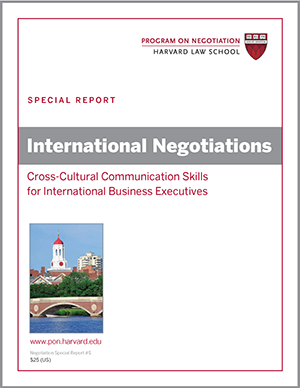
In 1987 government negotiations, U.S. president Ronald Reagan and Soviet General Secretary Mikhail Gorbachev took early steps to end the Cold War by signing the Intermediate-Range Nuclear Forces (INF) arms control treaty in Washington, D.C. Banning all ground-launched nuclear and conventional missile systems within a certain range, the INF treaty put in place a strict monitoring system and brought about the destruction of thousands of missiles on both sides. The treaty was widely credited with contributing to the fall of communism and renewed ties between the East and West.
In 2014, the Obama administration confronted Moscow with evidence that Russia was testing a cruise missile in violation of the INF treaty, a charge that Russia, led by President Vladimir Putin, strongly denied. In 2017, the Trump administration revealed that the alleged Russian missile was operational and had been deployed.
On February 2, 2018, the U.S. Department of Defense released a Nuclear Posture Review that included a proposal to add a sea-launched cruise missile to the U.S. nuclear arsenal. At a subsequent House Armed Services Committee hearing on U.S. nuclear strategy, Defense Secretary Jim Mattis hinted that the cruise missile was intended as a bargaining chip to be leveraged in future arms control negotiations with Russia. “We have an ongoing issue with Russia’s violation of the INF,” he said. “I want to make certain that our negotiators have something to negotiate with.”
In government negotiations, business negotiations, and beyond, we face numerous challenges, such as trying to get more of what we want, break through an impasse, or induce compliance with previously negotiated terms. In such situations, one move often helps: adding new issues to the mix.
Negotiators sometimes fear that added complexity will make it harder to reach agreement. In fact, the opposite is typically true: The more issues we discuss, the easier it is to identify tradeoffs that can create value or break a stalemate. To take a simple example, a salesperson may be willing to concede a bit on price per unit if the client agrees to a less expensive shipping method than previously discussed.
The common tendency to approach a negotiation as a pie to be carved up can prevent us from seeing clearly how we might create value. But as two government negotiations from the Trump presidency illustrate, it’s not always as simple as bringing up a new issue as soon as it occurs to you. Whether issues are designed to be intimidating or tantalizing, they need to be added to the mix with care.
Adding “Sticks” to Motivate Concessions
The Trump administration apparently calculated that adding a new issue—the proposed sea-launched cruise missile—to future INF negotiations might help induce Russian compliance during government negotiations. The proposal succeeded in getting Russia’s attention: Its Foreign Ministry released a statement calling the U.S. nuclear proposal “unscrupulous,” “confrontational,” and “anti-Russian.” And in a speech, Putin claimed that Russia was testing new nuclear weapons and presented an animated video of nuclear warheads striking Florida.
“I don’t think the Russians would be willing to give up something to gain nothing from us,” Mattis said in his House testimony. He stopped short of saying that the United States would abandon the planned missile if Moscow complied with the treaty to his satisfaction: “I don’t want to say in advance of a negotiation.”
As Mattis suggested, you generally won’t get a concession in negotiation unless you offer something the counterpart values in return. What if you don’t seem to have anything of value to offer? Then you might be able to create an issue to serve as a bargaining chip—such as the threat of losing business to a competitor, the promise of new business, or a bonus. Then propose a tradeoff between the new issue and an existing issue that concerns you more.
Notably, there are risks to proposing issues in the form of “sticks,” as the Trump administration’s gambit suggests. The U.S. demands could have set a new missile race in motion. Indeed, a group of senators wrote a letter warning Mattis that the new policy could undermine decades of U.S. efforts to reduce nuclear threats, CNBC reports.
In 2019, Trump withdrew the United States from the INF, which called off further arms talks with Russia during his presidency. In February 2021, President Joe Biden renewed a different weapons treaty with Russian, the New Strategic Arms Reduction Treaty, with the goal of preventing future arms races and monitoring Russian compliance with the treaty’s terms.
Your “stick” may not be an actual weapon, but it’s still critical to think through what will happen if your counterpart doesn’t respond as you’d like or expect. In addition, avoid signaling that you concocted an issue just to get the other side’s attention, or they may feel manipulated. Finally, be prepared to follow through on any offers you make, including those that contain an implicit threat.
Adding “Carrots” to Get More of What You Want
Looking for more than just a token concession from a counterpart on an issue? If so, you might expand the discussion to include an issue your counterpart values highly that hasn’t previously been considered.
In January 2018, President Donald Trump met with members of Congress regarding potential legislation to solidify Obama-era protections for “Dreamers,” younger immigrants who were brought to the United States illegally as children, which Trump had announced plans to repeal. Those meetings—one collaborative, one hostile—ultimately were followed by a brief government shutdown and a stalemate on the issue.
Then, on January 25, Trump presented Congress with a new “take it or leave it” legislative proposal that expanded the discussion while doubling down on some of his demands. Looking beyond the approximately 690,000 people who previously registered for the DACA (Deferred Action for Childhood Arrivals) program, Trump also offered a path to citizenship for eligible DACA recipients who had not previously applied to the program— about 1.1 million more people.
The offer, which, according to the New York Times, was designed to appeal to centrists and conservatives in Congress, came to Democrats with significant strings attached: Congress would have to create a $25 billion fund to pay for a border wall with Mexico, dramatically ramp up arrests and deportation of other undocumented immigrants, prevent citizens from sponsoring their foreign-born parents as citizens, and end a program set up to encourage migration from underrepresented countries.
The more issues we are able to discuss, the easier it is for us to identify potential tradeoffs that will create value or break a stalemate.
The White House said that if the offer wasn’t accepted, existing DACA recipients would face deportation when the program expired on March 5. Democrats called the offer a nonstarter, saying they would not sacrifice the well-being of other immigrants to protect the Dreamers.
Trump’s offer may have been aimed more at the public than at Democrats. He tweeted that he offered his “wonderful deal” in part “to show that Democrats do not want to solve DACA, only use it!” Having already taken away Dreamers’ protections, Trump appeared to believe that both a deal and no deal would be wins for him—and thus to be indifferent about what would happen. DACA expired in March 2018, but district court rulings kept it in place. Upon taking office, Biden issued an executive order reinstating DACA.
Broadly speaking, Trump’s offer to the Democrats highlights a strategy that can be useful well beyond government negotiations when carefully deployed: Offer a carrot in the form of a new or expanded issue that your counterpart values highly but that matters less to you; then propose a tradeoff on an issue or issues you value more. With any luck, you’ll tempt the other party to make significant concessions in negotiation to nab the carrot.
3 lessons from government negotiations with keys to capitalizing on new issues
These at-the-table strategies will help you identify issues to add to the mix and make the most of them:
- Ask questions and volunteer information. The best negotiators are relentlessly curious about their counterparts’ interests and ready to share information about their own interests. Although you never want to give away your bottom line, you can—and should—share plenty of information about which issues you value. Knowing what each side values will open the door to productive trades.
- Negotiate multiple issues simultaneously. Negotiators often prepare a list of issues and tackle them one at a time—a practice that limits their ability to identify tradeoffs across issues. A better approach: Agree up front that nothing’s decided until everything’s decided. Discussing multiple issues simultaneously will help you make valuable linkages.
- Make package offers. When you make two or three package offers at the same time, you increase your odds of reaching a deal that works for both parties. To do so, craft several packages that you value more or less equally— such as three offers to a job candidate that vary on salary, benefits, travel, start date, and location. You might still need to haggle, but you’re more likely to avoid an impasse when you give people choices.
What have you learned from government negotiations you’ve participated in?





